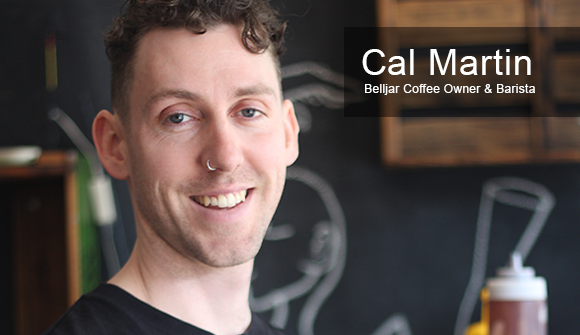What a Barista Can Teach You About Payments

What can a barista teach you about payments? Quite a lot it turns out.
Being a payments geek, I have often found myself asking local baristas and café owners about why they have selected their payment service provider.
Interview with Cal Martin, owner and barista of Belljar Coffee:
Tell us about when you started business and why?
I worked as a barista here for three years prior to taking over the business in June 2017. Having been involved in coffee service for a while. I could see the potential for the place and wanted the autonomy to run it as an owner/operator.
Do you have a signature dish?
Our mushroom roll is super popular – braised confit mushrooms, pickled slaw, coriander, fresh and fried shallots, chili and sticky soy on a milk bun
And do you use a special coffee blend?
We use a blend from the Little Marionette by Tyler Ritchie.
Now switching the discussion to payments – why did you feel the need to change your payments provider when you bought the business?
The business previously had a small CBA EFTPOS terminal, but it didn’t work well as there’s poor mobile coverage here – payments were being declined and we were chasing people up the road for a $4 coffee.
When looking for a new payments provider where did you search for information?
We approached CBA, but they wanted to move us on to the Albert device. We weren’t happy with that because of the size and feedback from others that the interface was clunky.
We also asked for quotes from Westpac and Tyro. Tyro was very responsive, but the major banks didn’t really seem that interested unless we were banking with them.
After dohttp://– https://www.westpac.com.au/business-banking/merchants-and-payments/ing some online research, we eventually decided to go with Square (reader for contactless and chip and PIN).
When we first installed Square it was a talking point because it was fresh and new.
Why did you choose Square?
It uses Wi-Fi and falls back to 3G/4G so solved our connectivity problem.
Signing up with CBA was also going to take a minimum of one week. With Square I was able to sign up online and take payments almost immediately. When you start a new business, it’s one less worry to deal with.
What do you like about Square now that you have used it for some time?
People like to tap – only the older crowd still insert, so the solution has been great. I also like the reporting that Square provides.
Is there anything you don’t like about the Square service?
Currently our main issue with Square is that they don’t accept eftpos branded cards and twice a week at least we have people that want to pay using eftpos but they can’t. Sometimes people don’t have cash either, so we rely on the honesty system that they will return later to pay.
When people say “EFTPOS” they just mean any card payment – Visa, Mastercard, eftpos, so to be clear it is the eftpos branded cards that we can’t accept today. We are also starting to see more AmEx cards being used, which Square accepts.
Square really need to offer eftpos to be directly comparable – that’s the only thing that stops a lot of people changing.
Are there any other features and functionality that you would like to see added?
Sometimes people seem insecure because Square works from a mobile, so we’re now looking to move to the tablet using Square. The benefits are customisation and cost versus paying for a separate POS application. The downside is that we could be locked in, but it still makes sense.
Why a tablet when you said previously that the size of the Albert device was an issue?
The tablet, in terms of customer perception will solve the mobile phone interface issue.
Improved efficiency is the main reason for wanting to change. Using a tablet with the Square POS app will allow us to get away from paper docket systems. The guys can take the orders on the tablet at the table. We can then automatically print receipts for the barista and the kitchen.
This means we can get rid of our triplicate paper docket system – the current process of handing over the dockets to other staff is inefficient and prone to errors.
The POS app can also help with planning – stock control and stock rotation. Allowing us to track inventory through an app will make life easier.
Any other comments?
Cash payments are minimal. It used to be a 50/50 split between card and cash payments, but now it’s 80/20 in the space of just 12 months. Customers now have an expectation that they can pay for a coffee by tapping, no minimums, no fees.
Update 9 March 2021: Square now supports eftpos and least-cost routing. Commonwealth Bank now offers terminals that are able to store up to 100 transactions and continue taking card payments even when the terminal is unable to connect to the bank. All the major banks offer the option to settle into a bank account held with another bank, though typically higher fees are charged when this is the case.
Author: Mangala Martinus, Managing Director, Australia, Payments Consulting Network.
***
If you found this article helpful and would be interested in reading similar articles by our consulting team, please subscribe to our newsletter.
Are you interested in reading articles on a particular payments topic, company, payments industry executive or author? Click the search icon, it’s that magnifying glass in the top righthand side of the website, and type in the key words that interest you. You will then be presented with a list of any articles that match your search criteria.